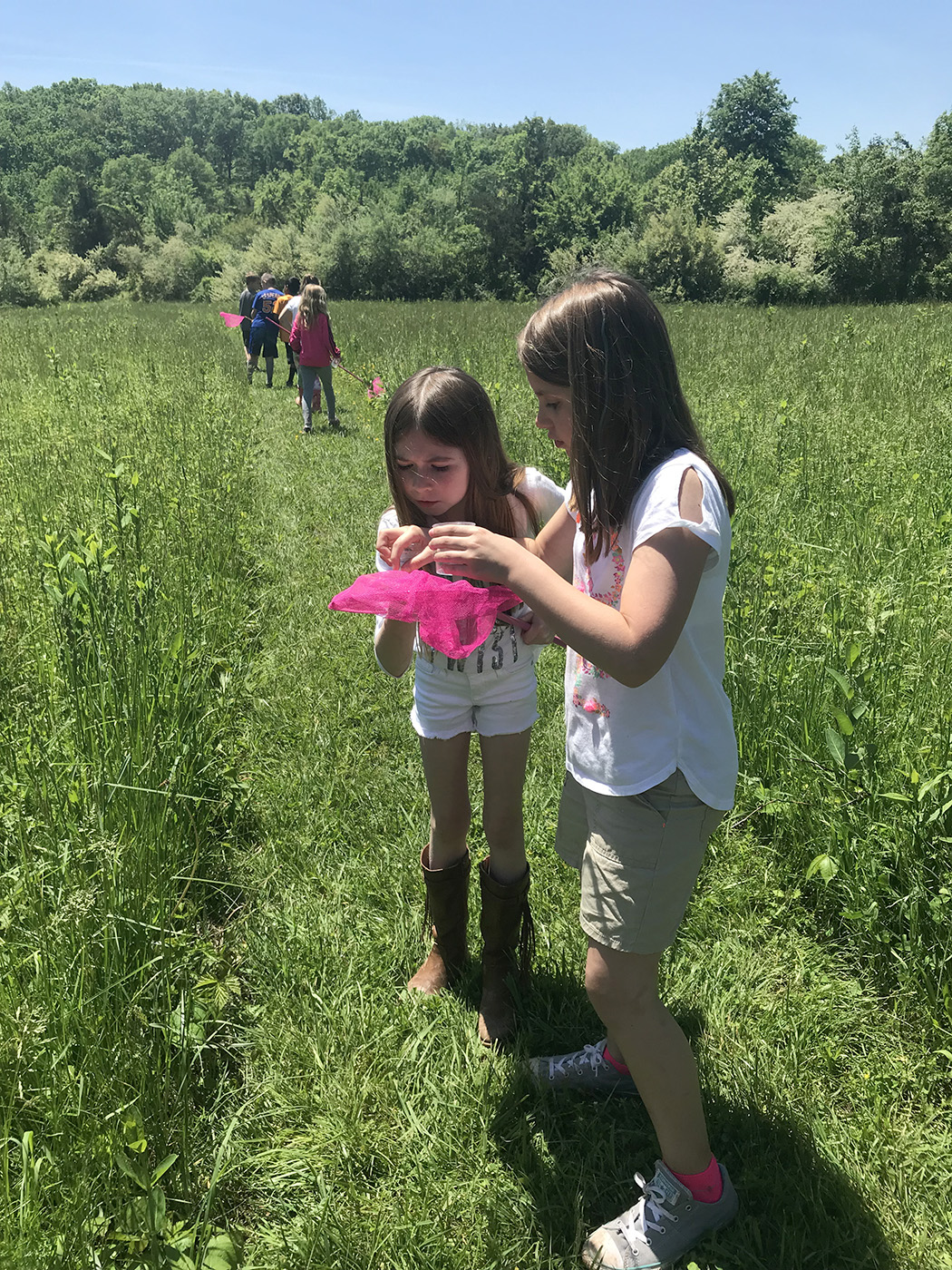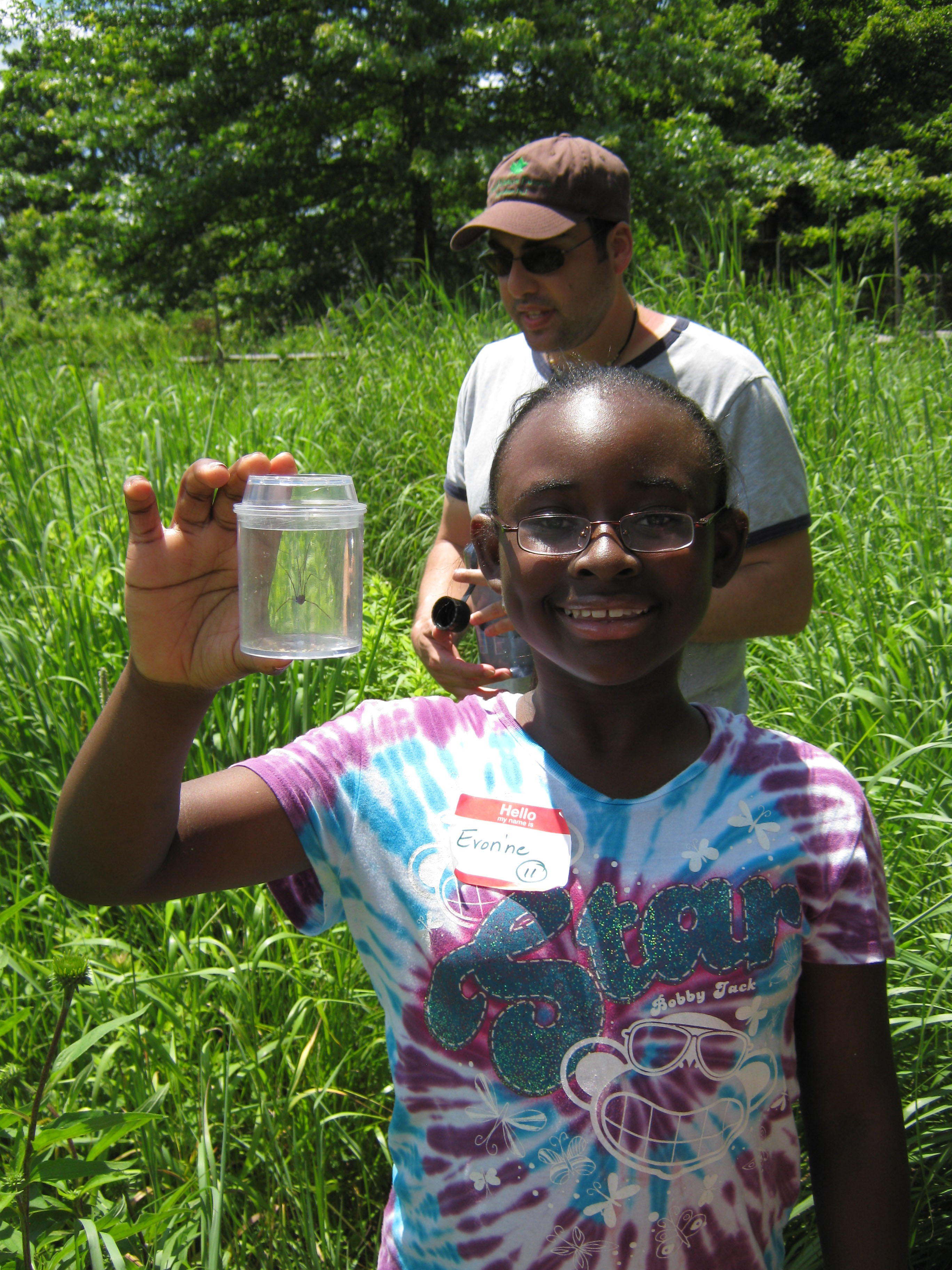Our Field trip programs are perfect for an entire grade level, a single class, a homeschool group, a scout group, or any gathering of people that would like to learn more about nature!
Groups rotate to your choice of program stations throughout the day! Depending on the number of stations you choose and the duration of your field trip, each activity lasts in duration from 20 to 45 minutes. Typically a program from 10 am until 1 pm works well, and includes a 30 minute picnic lunch break (BYO lunch!). An energetic, hands-on day of educational fun!
Fun with Fossils
Students develop an understanding of how fossils form and how we can benefit from studying them by interacting with real fossils that were locally collected. Students help demonstrate the process of fossilization by making their own mold and cast fossils!
Fulfills:
3-LS4-1 Analyze and interpret data from fossils to provide evidence of the organisms and the environments in which they lived long ago.
Rock On!
Students develop an understanding of their geological context, how rocks form, and the different types of rocks that are created by touching and interacting with unique rocks from NJ to around the world. The group will take a scavenger hunt to find local rocks and features. What stories can they tell us?
Fulfills:
K-ESS2-1 Use and share observations of local weather conditions to describe patterns over time
2-ESS1-1 Use information from several sources to provide evidence that Earth events can occur quickly or slowly.
Climate Change: The End of the Ice Ages
Students will examine casts from Ice Age animals to discover how fauna have changed over the last 14,000 years. Learners are guided through questions to recognize how both climate and European influence altered the population demographics.
Fulfills:
3-LS4-4 Make a claim about the merit of a solution to a problem caused when the environment changes and the types of plants and animals that live there may change
3-ESS2-2 Obtain and combine information to describe climates in different regions of the world.
Nature Journaling
Start a nature journal of your very own! Students receive a blank journal that they personalize with the guidance of our staff, using art and written descriptions to document their experiences. Students take these journals home with them to continue their explorations!
Fulfills:
K-ESS3-3 Communicate solutions that will reduce the impact of humans on the land, water, air, and/or other living things in the local environment.
K-LS1-1 Use observations to describe patterns of what plants and animals (including humans) need to survive
2-LS4-1 Make observations of plants and animals to compare the diversity of life in different habitats
Nature Hike
Enjoy a guided hike with a trained naturalist on sections of our beautiful trail system. Students will cross different habitats, using their senses of sight, hearing, smell and sometimes touch to make observations about nature!
Fulfills:
K-ESS3-3 Communicate solutions that will reduce the impact of humans on the land, water, air, and/or other living things in the local environment.
K-LS1-1 Use observations to describe patterns of what plants and animals (including humans) need to survive.
2-LS4-1 Make observations of plants and animals to compare the diversity of life in different habitats
Pond Ecology
Exploring the trail around Fairview Farm’s pond provides many opportunities for wildlife observation, and to study the habitats in and around the water. Students learn about aquatic ecosystems, and observe first-hand some live benthic macroinvertebrates, tiny critters from the stream bed!
Fulfills:
3-LS4-3 Construct an argument with evidence that in a particular habitat some organisms can survive well, some survive less well, and some cannot survive at all.
3-LS4-4 Make a claim about the merit of a solution to a problem caused when the environment changes and the types of plants and animals that live there may change.
K-LS1-1 Use observations to describe patterns of what plants and animals (including humans) need to survive
Our Native Pollinators
Explore Fairview Farm’s bird and butterfly garden, a colorfully alive space filled with native plants that provide food for birds, nectar for butterflies, leaves for caterpillars and habitat for many species of pollinators and other critters. Students learn about the butterfly life cycle and then “become” butterflies to learn about migration through a fun, hands-on game.
Fulfills:
K-ESS2-2 Construct an argument supported by evidence for how plants and animals (including humans) can change the environment to meet their needs.
2-LS2-2 Develop a simple model that mimics the function of an animal in dispersing seeds or pollinating plants.
3-LS2-1 Construct an argument that some animals form groups that help members survive
Birds of New Jersey
Learn about some of our native feathered friends, their life cycle and their role in the ecosystem. We will start with some identification techniques and then use binoculars to observe the birds that call Fairview Farm home!
Fulfills:
K-LS1-1 Use observations to describe patterns of what plants and animals (including humans) need to survive.
K-ESS2-2 Construct an argument supported by evidence for how plants and animals (including humans) can change the environment to meet their needs.
Tracks and Scat
Learn to see the stories that surround us by utilizing traditional methods of tracking. We will go over the various methods of locomotion that animals use, and the different signs they leave behind. By using our observational skills we will search for signs of animals and open our eyes to the vivid stories of nature!
Fulfills:
K-2-ETS1-1 Ask questions, make observations, and gather information about a situation people want to change to define a simple problem that can be solved through the development of a new or improved object or tool.
Animal Adaptations
Students learn how aquatic animals have adapted to their unique environment, and use creativity to design an imaginary creature perfectly suited for a watery habitat.
Fulfills:
2-LS4-1 Make observations of plants and animals to compare the diversity of life in different habitats.
3-LS3-1 Analyze and interpret data to provide evidence that plants and animals have traits inherited from parents and that variation of these traits exists in a group of similar organisms.
3-LS4-2 Use evidence to construct an explanation for how the variations in characteristics among individuals of the same species may provide advantages in surviving, finding mates, and reproducing.
3-LS4-3 Construct an argument with evidence that in a particular habitat some organisms can survive well, some survive less well, and some cannot survive at all.
The Water Cycle
Students learn about the water cycle–a critical concept in watershed conservation. In a fun, energetic game, students become water droplets traveling through the water cycle!
Fulfills:
K-ESS3-3 Communicate solutions that will reduce the impact of humans on the land, water, air, and/or other living things in the local environment.
2-ESS2-3 Obtain information to identify where water is found on Earth and that it can be solid or liquid.
Super Soils
Students examine the composition of different soil types found in New Jersey to learn what soil is made of and how soil type affects vegetation and habitat. A visit from an alien from Planet Zog reminds us how special the soil of planet Earth really is!
Fulfills:
K-PS3-1 Make observations to determine the effect of sunlight on Earth’s surface.
Life on the Forest Floor
Explore the forest floor in our outdoor classroom, looking under logs, stones and leaves to find and identify creatures in the leaf litter and under the soil! Compare the shapes and life cycles of these critters to those we find at the “Pond Ecology” station.
Fulfills:
3-LS4-3 Construct an argument with evidence that in a particular habitat some organisms can survive well, some survive less well, and some cannot survive at all.
3-LS4-4 Make a claim about the merit of a solution to a problem caused when the environment changes and the types of plants and animals that live there may change.
K-LS1-1 Use observations to describe patterns of what plants and animals (including humans) need to survive.
Tremendous Trees
Working in pairs, we’ll get a closer look at trees using our senses. By interviewing a tree and imagining its “life story,” students will creatively explore why trees are so important to humans and how we relate to them.
Fulfills:
3-LS4-3 Construct an argument with evidence that in a particular habitat some organisms can survive well, some survive less well, and some cannot survive at all.
3-LS4-4 Make a claim about the merit of a solution to a problem caused when the environment changes and the types of plants and animals that live there may change
K-LS1-1 Use observations to describe patterns of what plants and animals (including humans) need to survive.
Grasses and Grains
Explore Fairview Farm’s beautiful meadows, examining different types of grasses, herbaceous plants and wildflowers. We’ll study the different types of plants in this unique and sensitive habitat, and discuss their similarities and differences.
Fulfills:
3-LS4-3 Construct an argument with evidence that in a particular habitat some organisms can survive well, some survive less well, and some cannot survive at all.
3-LS4-4 Make a claim about the merit of a solution to a problem caused when the environment changes and the types of plants and animals that live there may change.
K-LS1-1 Use observations to describe patterns of what plants and animals (including humans) need to survive.
Going, Going, Gone!
Through a hands-on activity, students examine different ways soils can be eroded. They’ll learn how proper stewardship of the land results in less erosion and better ecosystem health.
Fulfills:
K-ESS3-3 Communicate solutions that will reduce the impact of humans on the land, water, air, and/or other living things in the local environment.
Helping the Climate
Students learn how climate cbhange impacts our watershed, and are empowered to act in ways to decrease their own carbon footprint.
Fulfills:
K-ESS3-3 Communicate solutions that will reduce the impact of humans on the land, water, air, and/or other living things in the local environment.
3-LS4-4 Make a claim about the merit of a solution to a problem caused when the environment changes and the types of plants and animals that live there may change
 Fairview Farm is a 170-acre wildlife preserve, and the perfect outdoor classroom! With over five miles of trails, a pond, meadows, forest, and a bird and butterfly garden, there is plenty to observe, discover and experience. Our beautiful farm setting can host upwards of 150 students at once, with ample bus parking, picnicking areas and restroom facilities.
Fairview Farm is a 170-acre wildlife preserve, and the perfect outdoor classroom! With over five miles of trails, a pond, meadows, forest, and a bird and butterfly garden, there is plenty to observe, discover and experience. Our beautiful farm setting can host upwards of 150 students at once, with ample bus parking, picnicking areas and restroom facilities.  Contact Director of Education, Lauren Theis, for pricing and to book your program!
Contact Director of Education, Lauren Theis, for pricing and to book your program!